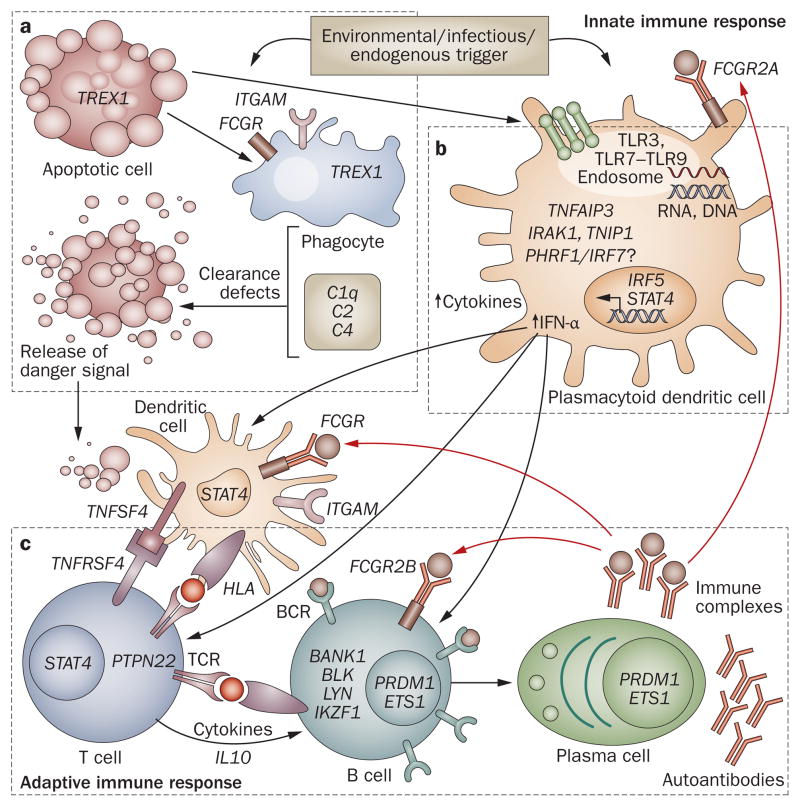Figure 1.
Model of SLE-associated genetic variants in the immune response. This model is derived from current understandings of important immunological pathways involved in SLE pathogenesis, as highlighted by the identified SLE susceptibility loci. a | Processing and clearance of immune complexes. Environmental triggers that induce apoptosis and release of nuclear antigens can stress phagocytes (including macrophages and neutrophils), causing defective clearance of nuclear antigens. b | TLR–IFN signaling. Environmental triggers including ultraviolet light, demethylating drugs and viruses can yield stimulatory DNA or RNA that activates TLRs, resulting in secretion of type I IFN. c | Signal transduction in the adaptive immune response. Presentation of nuclear antigens to dendritic cells leads to the generation of autoantibodies and immune complexes that amplify both innate and adaptive immune responses. Abbreviations: BCR, B-cell receptor; IFN, interferon; IL, interleukin; SLE, systemic lupus erythematosus; TCR, T-cell receptor; TLR, Toll-like receptor.

